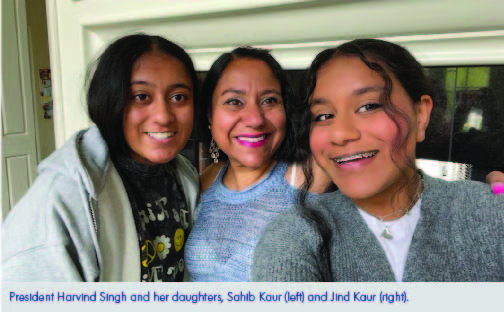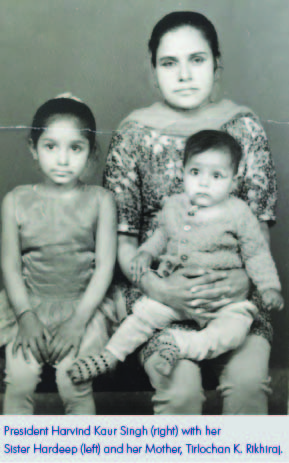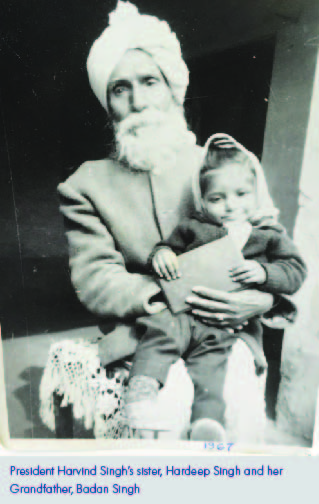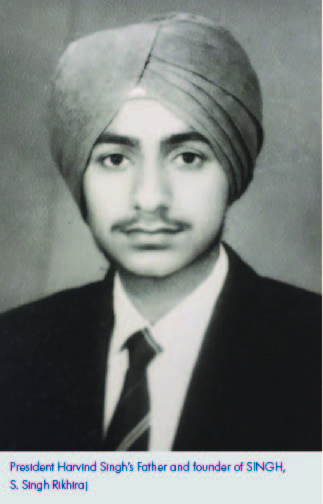SINGH President, Harvind Kaur Singh discusses how the Model Minority Myth downplays the impact of systemic racism and discrimination faced by people of color. With the recently passed TEAACH Act, Asian Americans and Pacific Islanders are brought hope for the future of the U.S. Education system- just in time for AAPI Heritage Month.

Asian/Pacific Americans are a diverse and often overlooked group in the American landscape. Asians have been a driving force in the development of this country and have a strong and rich history in America. However, Asian American stories are not often found in history textbooks or taught in schools.
I am proud that Sen. Villavalam and Rep. Gong-Gershowitz of the Illinois legislature have introduced Teaching Equitable Asian American Community History (TEAACH) to the Illinois School Code. This Act will amend the Illinois School Code to include Asian American History Curriculum in every public school in Illinois.
While Asians are among the fastest growing populations, stereotypes abound. Asian Americans are an extremely diverse group. We represent more than 20 countries and even more languages. Asians are faced with the myth of being the “model minority” – taking a diverse population and flattening it into a singular group that all Asians are the same and yet different from other Americans. The Model Minority myth characterizes Asian Americas as quiet, polite, and high achieving or silent, willing to assimilate, and too successful. The myth is grounded in the concept that Asian Americans play within the rules of the American system for their own benefit and should serve as an example of how “other” groups should behave. The statistical reality is far more complex, and the Model Minority myth is used to erase the experience of many Asian and Pacific Islander Americans. Asians also face gender bias. Asian women are portrayed as exotic, submissive, and are hyper sexualized. Asian men are considered effeminate and high achieving yet unworthy of leadership positions. Asians are often still considered foreign and “other” in America.



The “model minority” myth is persistent. It is used as evidence to deny or downplay the impact of systemic racism and discrimination faced by people of color. The myth is used to pit people of color against one another in attempts to create a hierarchy by which to divide.
All of this has led to leaving Asian Americans out of disparity conversations or dismissals of the community as a whole. There are many times when I sit through meetings and equity conversations abound. I’m glad to have a seat at that table. However, I’m extremely disturbed by the fact that diversity often only means African American or Latinx communities. Asian-Americans, and Indigenous communities are rarely mentioned. The myth and the stereotypes essentially render Asians invisible- erased – in discussions of race and prejudice in America.
Recent hate crimes against Asians have once again brought attention to the issue and begun conversations. The TEAACH act is a positive move forward to highlight the contributions of Asians to the building of America.
May is Asian American Pacific Islander (AAPI) Heritage Month. I challenge you to incorporate the experiences and histories of AAPI Americans to dismantle the myth of the “Model Minority”. I’m sharing a brief timeline below of some history. I strongly urge you to watch the amazing PBS documentary on Asian American history.
The Library of Congress, National Archives and Records Administration, National Endowment for the Humanities, National Gallery of Art, National Park Service, Smithsonian Institution and United States Holocaust Memorial Museum join in paying tribute to the generations of Asian and Pacific Islanders who have enriched America’s history and are instrumental in its future success. View more about Asian Pacific Heritage Month.
- Gold discovered in California. Chinese miners begin to arrive.
- China is defeated by the British Empire in the first Opium War, resulting in Treaty of Nanjing whereby China is forced to cede the island of Hong Kong and open ports to foreign commerce.
- A series of floods and crop failures in southern China lead to poverty and threat of famine among peasant farmers.
- Three Chinese students arrive in New York City for schooling. One of them,Yung Wing, graduates from Yale in 1854 and becomes the first Chinese to graduate from a U.S. college.
- California imposes Foreign Miner’s Tax and enforces it mainly against Chinese miners, who were often forced to pay more than once.
- California passes a law to bar entry of Chinese and “Mongolians.”
- Chinese excluded from San Francisco public schools
- California’s second constitution prevents municipalities and corporations from employing Chinese.
- California state legislature passes law requiring all incorporated towns and cities to remove Chinese outside of city limits, but U.S. circuit court declares the law unconstitutional.
- U.S. and China sign treaty giving the U.S. the right to limit but “not absolutely prohibit” Chinese immigration.
- Section 69 of California’s Civil Code prohibits issuing of licenses for marriages between
- Chinese exclusion made indefinite and applicable to U.S. insular possessions.
- Japanese plantation workers engage in first organized strike in Hawaii.
- Punjabi Sikhs begin to enter British Columbia.
- Chinese in the U.S. and Hawaii support boycott of American products in China.
- Koreans establish Korean Episcopal Church in Hawaii and Korean Methodist Church in California.
- San Francisco School Board attempts to segregate Japanese schoolchildren.
- Korean emigration ends.
- Koreans in San Francisco form Mutual Assistance Society.
- Asiatic Exclusion League formed in San Francisco.
- Section 60 of California’s Civil Code amended to forbid marriage between whites and “Mongolians.”whites and “Mongolians, Negroes, mulattoes and persons of mixed blood.”
- Japanese farm workers driven out of Turlock, California.
- Filipinos establish a branch of the Caballeros Dimas Alang in San Francisco and a branch of the Legionarios del Trabajo in Honolulu.
- Washington and Louisiana pass alien land laws.
- Takao Ozawa v. U.S. declares Japanese ineligible for naturalized citizenship.
- New Mexico passes an alien land law.
- Cable Act declares that any American female citizen who marries “an alien ineligible to citizenship”
would lose her citizenship.
- U.S. v. Bhagat Singh Thind declares Asian Indians ineligible for naturalized citizenship.
- Idaho, Montana, and Oregon pass alien land laws.
- Terrace v. Thompson upholds constitutionality of Washington’s alien land law.
- Porterfield v. Webb upholds constitutionality of California’s alien land law.
- Webb v. O’Brien rules that sharecropping is illegal because it is a ruse that allows Japanese to possess and use land.
- Frick v. Webb forbids aliens “ineligible to citizenship” from owning stocks in corporations formed
- AFL charters the Filipino Federated Agricultural Laborers Association.
- December 7 – Japanese planes attack Pearl Harbor, Hawaii. United States enters World War II.
- After declaring war on Japan, 2,000 Japanese community leaders along Pacific Coast states and Hawaii are rounded up and interned in Department of Justice camps.
- President Franklin D. Roosevelt signs Executive Order 9066 authorizing the secretary of war to delegate a military commander to designate military areas “from which any and all persons may be excluded” – primarily enforced against Japanese Americans.
- Congress passes Public Law 503 to impose penal sanctions on anyone disobeying orders to carry out Executive Order 9066.
- Incidents at Poston and Manzanar relocation centers.
- Incident at Topaz Relocation Center. Registration crisis leads to Tule Lake Relocation Center’s designation as a segregation center.
- Hawaiian Nisei in the 100th Battalion sent to Africa.
- Congress repeals all Chinese exclusion laws, grants right of naturalization and a very small immigration quota to Chinese (105 per year).
- Tule Lake placed under martial law.
- Draft reinstated for Nisei.
- Draft resistance at Heart Mountain Relocation Center.
- 442nd Regimental Combat Team gains fame.
- Exclusion orders are revoked
Timeline sourced from: http://www.cetel.org/timeline.html
By Harvind K.Singh | President
